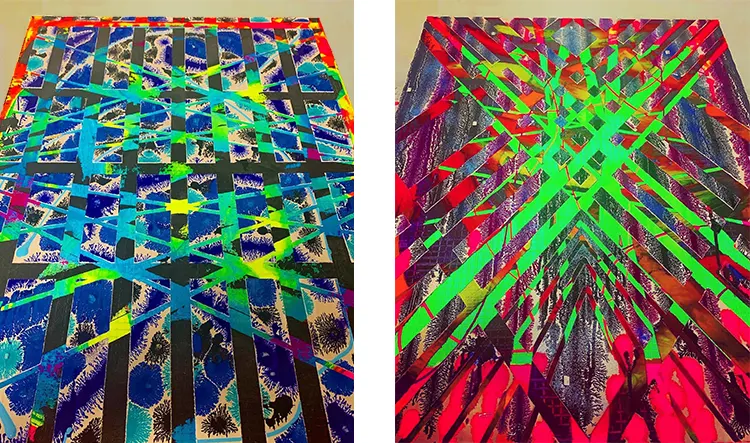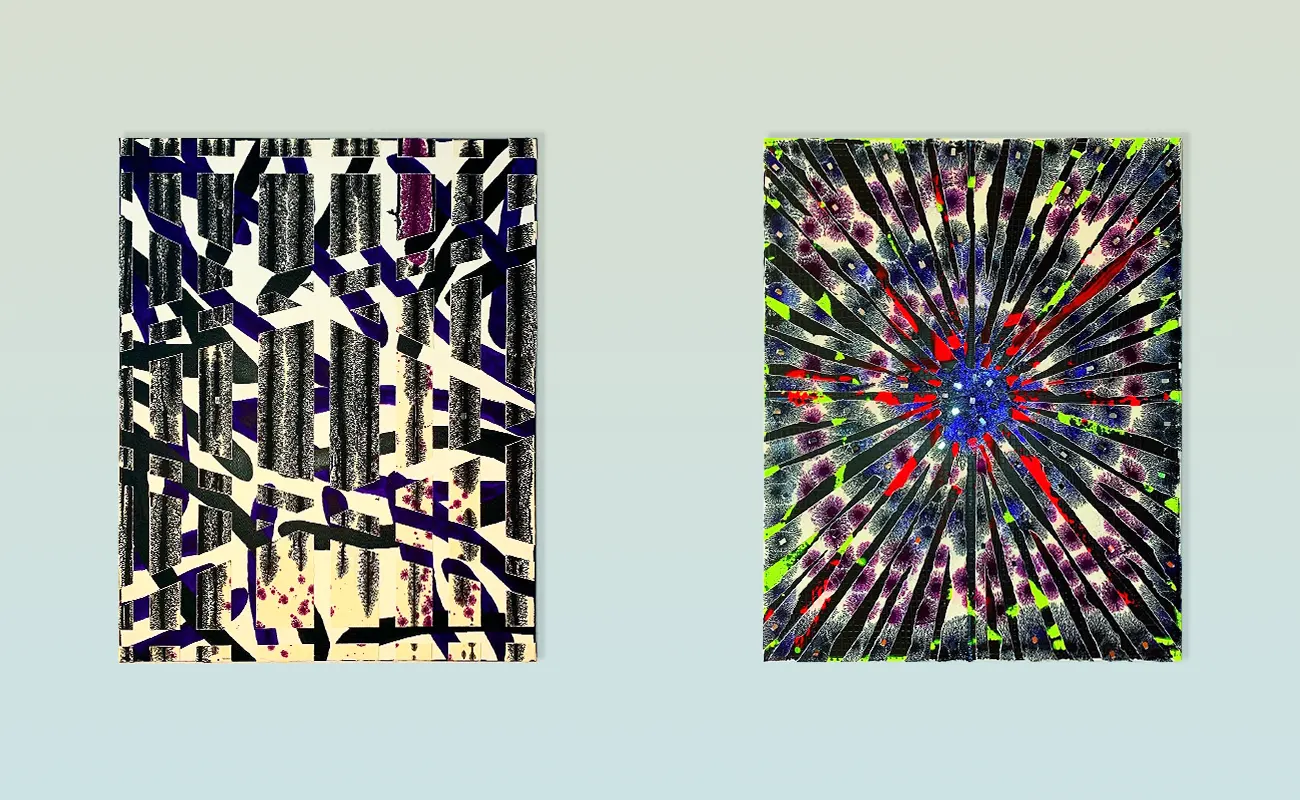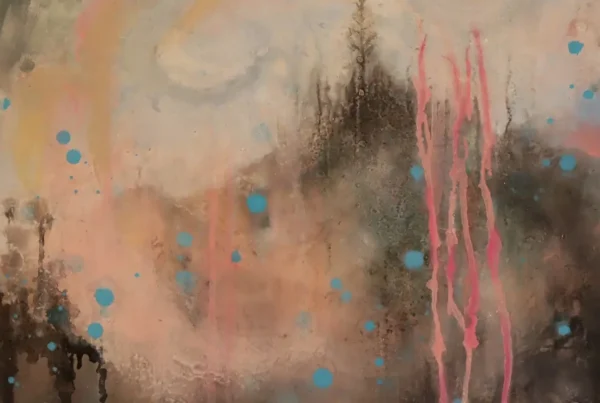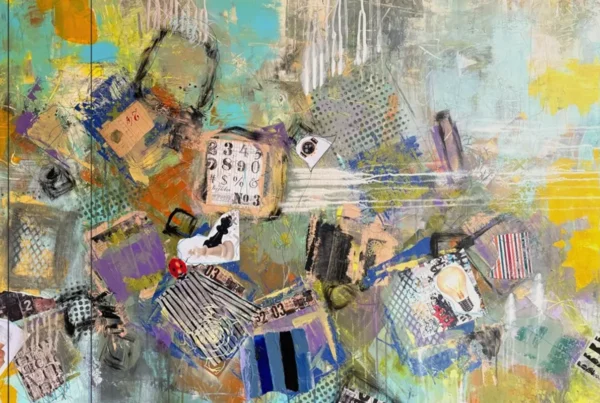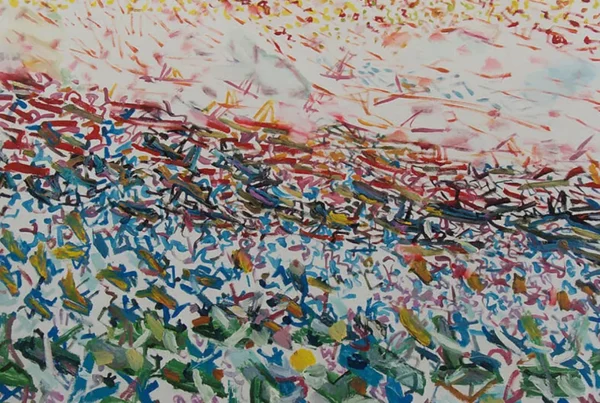“I guess how to best describe my style would be to say I’m an intuitive mixed media abstract artist. My work is basically non representational but I will be delving more into political and social themes in future paintings.”
Lincoln Howard: A Journey from Appreciation to Creation
Lincoln Howard‘s voyage into the art world began not with a brush in hand, but with a keen eye for the aesthetics of decay and transformation. Born in Vancouver, BC, on February 23, 1970, Howard’s early life had little to do with art production. While he enjoyed drawing and appreciated art in high school, he never engaged deeply in creating his own art during those formative years. Yet, Howard’s fascination for art was evident in his affinity for visiting galleries and collecting art that resonated with him. He was intrigued by the artistic process, often contemplating how artists brought their visions to life. The artist’s unique perspective was shaped by his appreciation for the beauty in the mundane – the way light and shadow played upon structures, the intriguing textures of rust and peeling paint on old buildings, and the graceful aging of objects over time. These everyday sights, akin to abstract paintings in their own right, laid the foundation for his artistic sensibility.
It was in 2017 that Howard’s artistic journey took a pivotal turn, thanks to his wife, Sylvia. Despite initial hesitation, he enrolled in an introductory acrylic painting class with her. This decision marked the beginning of his transformation from an art appreciator to an artist. Under the guidance of his encouraging instructor, Jackie, Howard was urged to explore larger canvases, a suggestion that sparked his passion for painting. The freedom and vibrancy of abstraction captivated him, leading him to embrace this style wholeheartedly. The artist’s transition into the world of painting was not just a change in hobby, but a profound shift in his self-identity, from a passive observer of art to an active creator, shaping his own artistic voice through colors and forms.
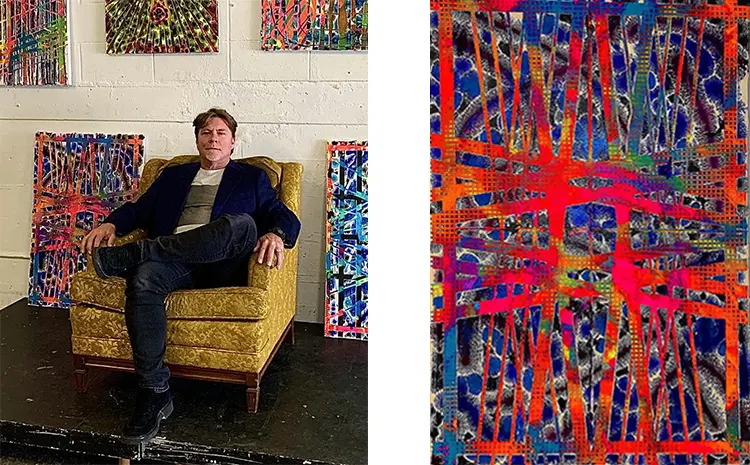
Lincoln Howard: An Intuitive Exploration of Style
Lincoln Howard describes his style as an intuitive mix of abstract expressionism, geometric abstraction, and mixed media. While his work is predominantly non-representational, he has expressed a growing interest in delving into political and social themes in his future paintings. The artist’s inclination towards sculpture signals an evolving artistic journey, as he seeks to expand his creative repertoire beyond the canvas. Howard’s artistic identity is a complex amalgam of various influences and styles, reflecting his journey from a casual observer of art to a creator who continually seeks to redefine his artistic voice.
Howard’s inspirations are rooted in the principles of abstract expressionism, drawing from the works of iconic artists such as Clifford Still, Mark Rothko, Jackson Pollock, and Franz Kline. These influences are complemented by his admiration for the works of Gerhard Richter, Jean-Michel Basquiat, and Andy Warhol. However, Howard does not limit his sources of inspiration to the traditional art world. He actively engages with contemporary platforms like Instagram and YouTube, immersing himself in the diverse array of artistic expressions and techniques shared by a global community of creators. This blend of classical and modern influences, combined with his intuitive approach to art, underpins the uniqueness of Howard’s style. He continuously borrows elements from these influences, integrating them into his work while adding his personal touch, thus creating a distinct artistic language that is both reflective of his journey and forward-looking in its exploration of new themes and mediums.
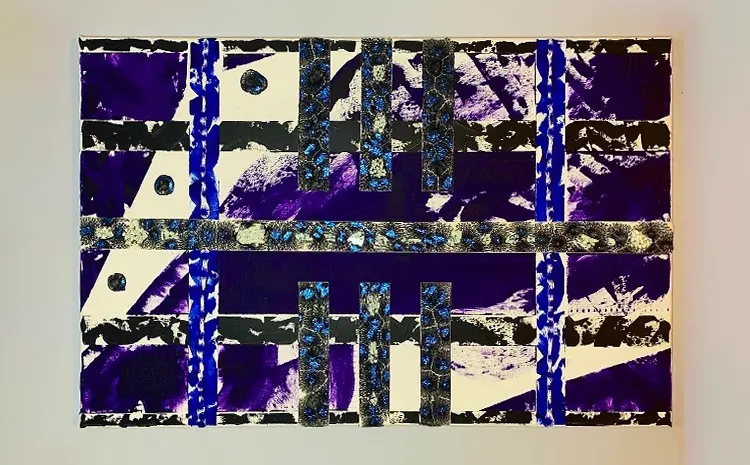
Lincoln Howard: The Sanctity of the Creative Space
The essence of Lincoln Howard’s creative process is deeply rooted in the physical space where his art comes to life. Central to his studio is a 1950s diner-style table and chair set, a cherished gift from his grandmother Millie. Acquired in 1994 when Howard first moved out in his early 20s, this table is not merely a piece of furniture; it is a symbolic presence, imbuing his studio with a sense of heritage and continuity. Howard paints with his canvases laid flat upon this table, feeling the spirit of his grandmother guiding and inspiring him. This emotional connection to his past is a crucial element of his creative process, providing a grounding force that fuels his artistic endeavors.
Another indispensable tool in Howard’s studio is his collection of spatulas or putty knives, which are essential for his unique painting technique. These tools allow him to blend and spread paint in a way that is both precise and expressive, enabling him to create the textures and forms that define his work. Howard’s methodical approach to painting is juxtaposed with his struggle to maintain focus amidst the distractions that come with having a home studio. Interruptions, especially when working with time-sensitive materials and techniques, can be a source of frustration for the artist. Nevertheless, he cherishes the sanctity of his alone time in the studio, recognizing it as a sacred space for creation and introspection. The challenge of balancing the convenience and comfort of a home studio with the need for uninterrupted creative time is a recurring theme in Howard’s artistic journey.
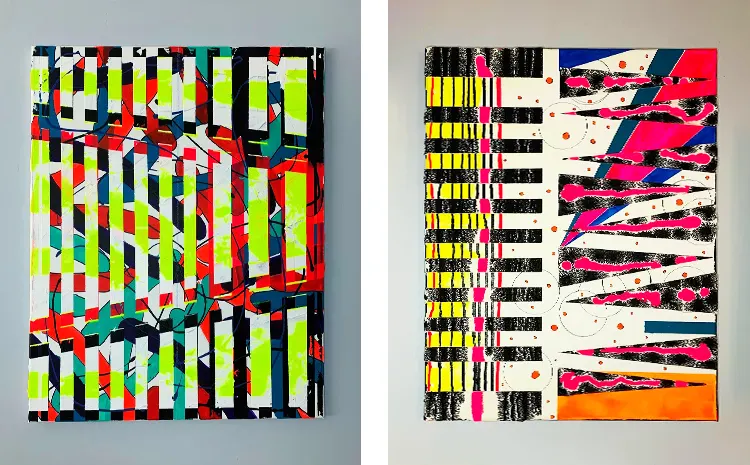
Lincoln Howard: Evolving Artistic Innovations
Lincoln Howard’s artistic evolution is marked by a continuous experimentation with materials and concepts, leading him to explore new dimensions in his work. His preference for acrylics is rooted in their user-friendliness and versatility, particularly in their rapid drying time, which suits his experimental techniques. Howard’s process is largely defined by trial and error, allowing him to naturally develop a style that is uniquely his own. The artist’s work is a testament to the boundless possibilities of abstraction and mixed media, where imagination and creativity know no limits.
A notable element in Howard’s recent works is the incorporation of mirrors, an idea born from repurposing a small disco ball mirror that his daughter intended to discard. These mirrors are more than decorative; they hold profound symbolic meaning. They represent introspection and self-examination, prompting viewers to reflect on their actions and influence in the world. This introspective quality adds depth to his paintings, inviting viewers to engage with the artwork on a more personal level. Furthermore, Howard is considering the integration of black light into his creations. Inspired by Dan Flavin’s light installation work, he plans to use neon and glow-in-the-dark paints in conjunction with black lights to create light box paintings with striking geometric designs. This innovative approach exemplifies Howard’s commitment to pushing the boundaries of his art, constantly seeking new ways to express his vision and engage with his audience.
